In the world of search engine optimization (SEO), choosing the right keywords is one of the most crucial steps in driving organic traffic to your website. Keywords are the foundation of SEO strategies, helping search engines understand the content of your site and connecting you with your target audience. But with so many options, how do you pick the right keywords for your website, blog, or online business?
This guide will walk you through everything you need to know about keyword selection for SEO, providing actionable insights into the process of researching, analyzing, and selecting keywords that will improve your website’s ranking and drive valuable traffic.
Why Keywords Are Important for SEO
Before diving into the process of selecting keywords, it’s essential to understand why keywords are so important in SEO. Search engines, like Google, use keywords to determine the relevance of your website to specific search queries.
When someone types a phrase into a search bar, Google’s algorithms scan the web for content that matches that phrase and ranks pages based on their relevance, authority, and other factors.
Using the right keywords allows you to target specific search terms your potential audience is looking for, increasing your chances of being found. Proper keyword selection can lead to:
- Higher rankings on search engine results pages (SERPs)
- Increased visibility and traffic to your website
- Higher quality traffic, resulting in better conversion rates
Understanding Keyword Types
Not all keywords are created equal. Keywords can be broken down into different types, each with its own purpose and impact on SEO. Knowing the types of keywords is a vital first step in selecting the right ones for your strategy.
1. Short-Tail Keywords
Short-tail keywords are broad search terms consisting of one or two words, such as “shoes” or “digital marketing.” These keywords typically have a high search volume but are very competitive. While they might attract a large number of visitors, the traffic is often less targeted and harder to convert.

2. Long-Tail Keywords
Long-tail keywords are more specific and usually consist of three or more words, such as “affordable running shoes for women” or “digital marketing services for small businesses.” These keywords have lower search volume but are less competitive and often attract more targeted traffic, making them easier to convert.
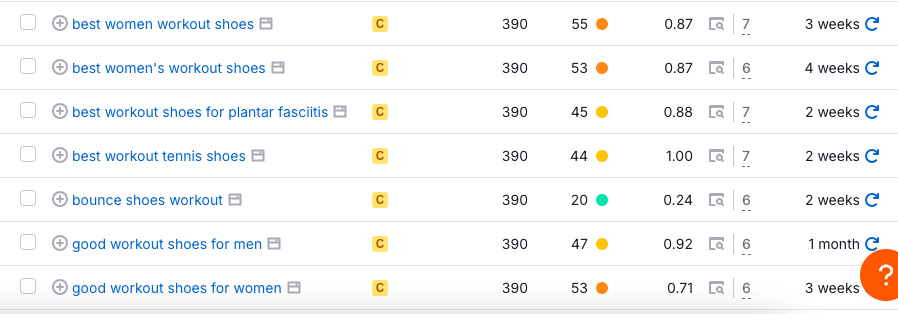
3. LSI (Latent Semantic Indexing) Keywords
LSI keywords are related terms that search engines use to better understand your content’s context. For instance, if your primary keyword is “digital marketing,” LSI keywords might include “SEO,” “content marketing,” or “social media strategies.” Including these in your content helps search engines grasp your page’s full scope.

4. Geo-Targeted Keywords
Geo-targeted keywords include location-specific terms, such as “best pizza in New York” or “plumbing services in Chicago.” These are ideal for local SEO, as they help businesses attract customers in their geographical area.
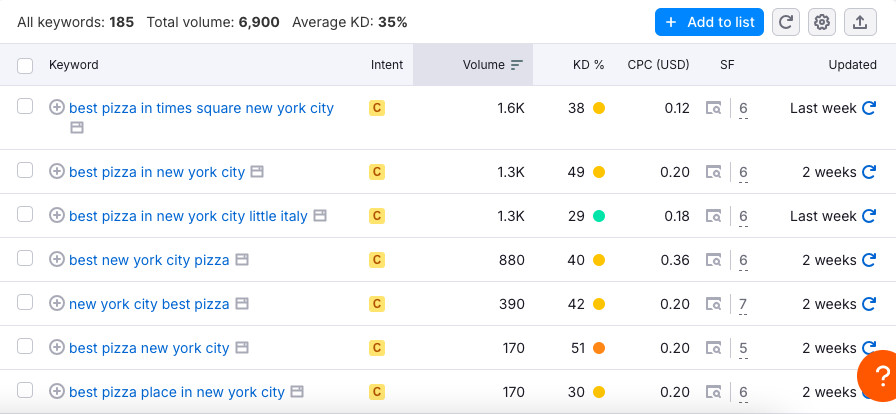
5. Transactional Keywords
These are keywords that suggest a user is ready to make a purchase, such as “buy,” “discount,” or “cheap.” Targeting transactional keywords is essential for e-commerce websites aiming to increase sales.
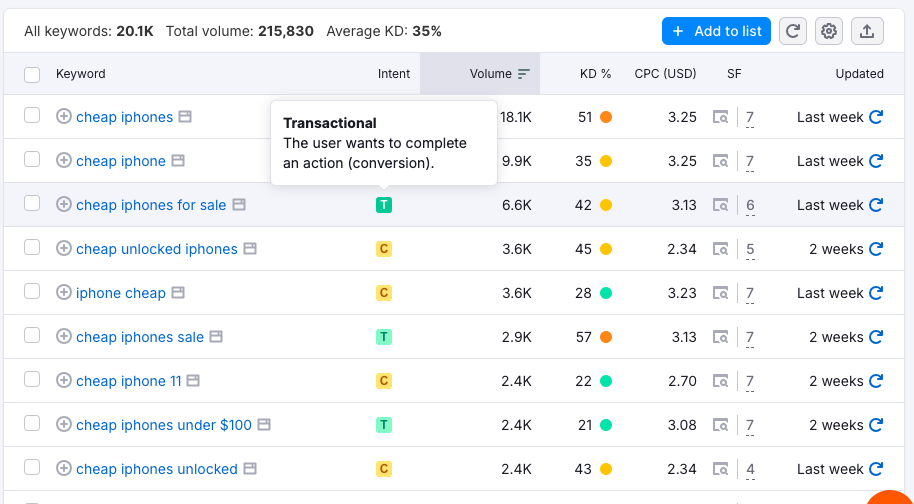
A Guide to Picking Keywords for SEO
Step 1: Define Your SEO Goals
Before you even start researching keywords, it’s important to define your SEO goals. Ask yourself:
- Are you trying to drive traffic to your blog?
- Are you hoping to increase sales on an e-commerce platform?
- Do you want to build brand awareness?
- Are you trying to attract local customers?
Your SEO goals will shape the types of keywords you target. For instance, if you’re focused on generating sales, you’ll want to prioritize transactional keywords. If your goal is to educate your audience, then informational keywords are more suitable.
Step 2: Brainstorm Keyword Ideas
Once your SEO goals are set, it’s time to start brainstorming keyword ideas. There are several ways to generate keyword ideas, including:
1. Think Like Your Audience
Consider the terms your target audience might use to find your products or services. If you own a coffee shop, potential keywords might include “best coffee near me,” “local coffee shop,” or “specialty coffee blends.”
2. Use Keyword Research Tools
Keyword research tools are essential for identifying high-value keywords. Popular tools include:
- Google Keyword Planner: This free tool helps you discover new keywords and provides data on search volume and competition levels.
- Ahrefs: Ahrefs offers a wealth of data on keyword search volume, competition, and traffic potential.
- Semrush: Another powerful SEO tool that provides insights into keyword trends, competitors’ keyword strategies, and more.
- Moz Keyword Explorer: This tool helps you find related keywords and track your ranking progress.
3. Analyze Competitors’ Keywords
Studying what keywords your competitors are ranking for can provide valuable insights. By looking at your competitors’ SEO strategies, you can discover keyword opportunities they might be missing or find gaps where you can outrank them.
4. Review Related Search Terms
Google’s related search terms, found at the bottom of SERPs, can help you find additional keyword ideas. These are phrases that users commonly search for in relation to your primary keyword and can broaden your keyword list.
Step 3: Understand Keyword Metrics
After brainstorming and gathering a list of potential keywords, the next step is analyzing them. Not every keyword is worth targeting, and understanding key metrics will help you prioritize the best ones.
1. Search Volume
Search volume refers to the number of times a keyword is searched for in a given time period, typically measured monthly. Higher search volume means more potential traffic but also more competition.
For instance, while a keyword like “coffee” might have thousands of searches, it will also be highly competitive, making it difficult for smaller websites to rank. Conversely, a long-tail keyword like “best organic coffee in Seattle” may have fewer searches but higher intent and lower competition.

2. Keyword Difficulty
Keyword difficulty measures how hard it is to rank for a specific keyword. Most SEO tools, like Ahrefs or Semrush, provide a keyword difficulty score. This score is based on factors such as the quality of competing content and the number of backlinks pointing to those pages.
When selecting keywords, aim for a balance of low to medium-difficulty keywords that still offer decent search volume.
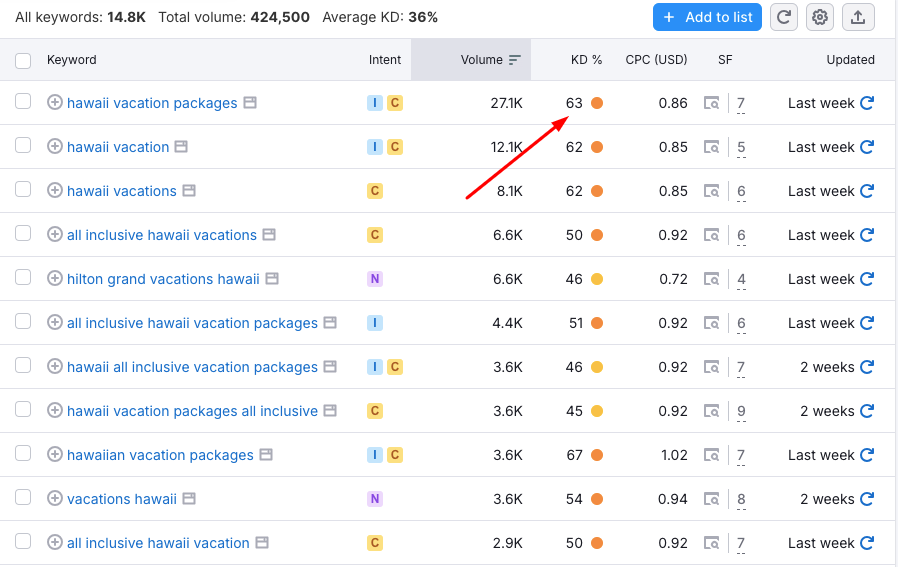
3. Cost-Per-Click (CPC)
Even if you’re not running a paid ad campaign, understanding a keyword’s CPC can give you insights into its commercial value. Higher CPC keywords are often more competitive, as businesses are willing to pay more to rank for these terms.

4. Search Intent
Keyword intent is the purpose behind a search. Are users looking for information, or are they ready to make a purchase? There are four types of keyword intent:
- Informational: The user is looking for information (e.g., “how to brew coffee”).
- Navigational: The user is trying to reach a specific website (e.g., “Starbucks”).
- Transactional: The user wants to buy something (e.g., “buy coffee beans online”).
- Commercial: The user is comparing products (e.g., “best coffee maker 2024”).
Understanding keyword intent helps ensure you’re targeting the right audience at the right stage of their buyer journey.
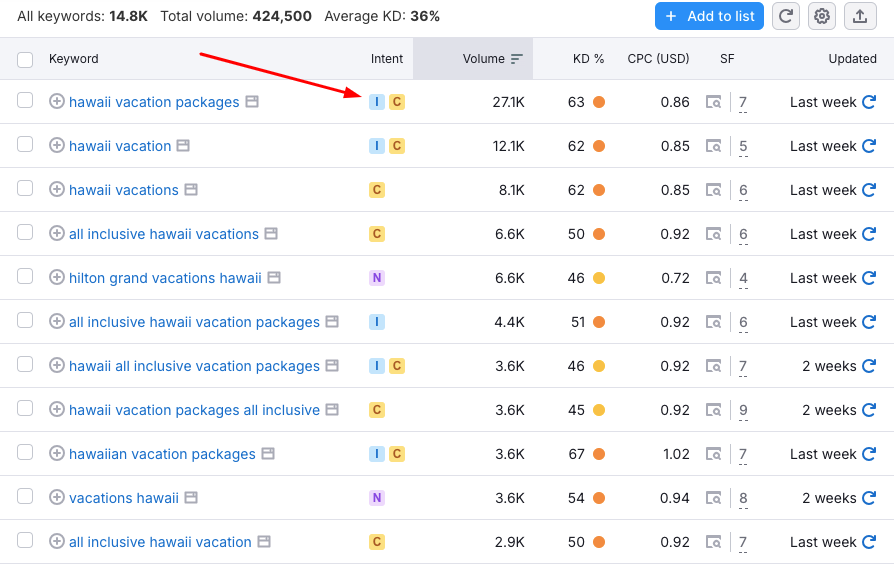
Step 4: Focus on Long-Tail Keywords
For most websites, especially newer ones or those in competitive industries, targeting long-tail keywords is more effective than going after highly competitive short-tail keywords.
Long-tail keywords are specific and cater to a niche audience. While they have lower search volumes, they often have higher conversion rates because the users searching for them know exactly what they want.
For example, instead of targeting “shoes,” which is extremely competitive, target something more specific like “best hiking shoes for women with flat feet.” This type of keyword attracts a more targeted audience with higher purchasing intent.
Step 5: Analyze SERP Features
During the keyword research process, pay attention to SERP features (Search Engine Results Page features), which are elements like:
- Featured snippets
- People Also Ask boxes
- Top stories
- Video carousels
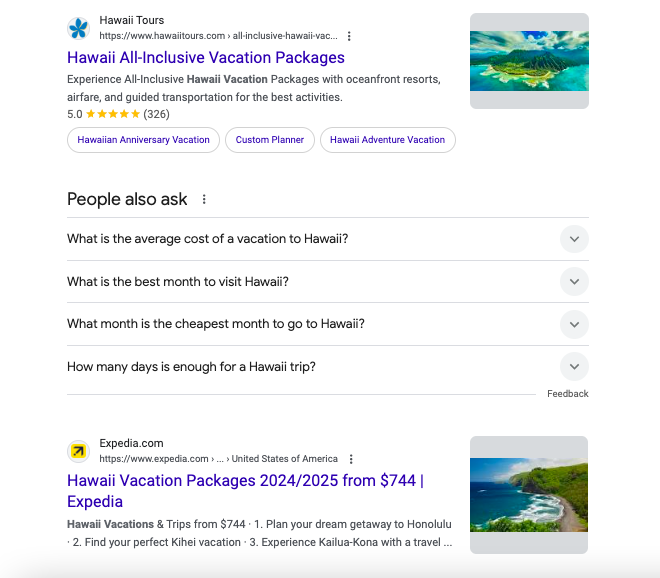
Some keywords trigger these special features, and ranking for them can significantly boost your visibility in search results. For instance, if your content is optimized to appear in a featured snippet, it can result in a higher click-through rate, even if your page isn’t the first organic result.
Step 6: Use LSI Keywords and Synonyms
To avoid keyword stuffing (repeating your primary keyword too many times), use LSI (Latent Semantic Indexing) keywords. These are related terms or synonyms that provide context to your content and help search engines better understand your page.
For example, if your primary keyword is “digital marketing,” related LSI keywords could be “online marketing,” “SEO,” or “content marketing.” Including these in your content helps diversify your language while staying relevant to your main topic.
Step 7: Prioritize User Experience (UX)
When choosing and implementing keywords, always prioritize user experience. Gone are the days of keyword stuffing, where loading a page with keywords would guarantee higher rankings. Today, search engines prioritize content that provides value to users.
Here are a few UX tips to consider:
- Answer user questions: Your content should directly answer the user’s search query.
- Use clear, concise language: Avoid jargon and ensure your content is easy to read.
- Improve page load speed: Slow pages increase bounce rates, negatively impacting SEO.
- Use responsive design: Ensure your website works well on both desktop and mobile devices.
Step 8: Organize Keywords by Topic
Instead of focusing on individual keywords, organize your keywords into topics or clusters. This approach not only helps you rank for multiple related terms but also allows search engines to view your content as authoritative on a given subject.
For example, if you’re running a website on fitness, you could have a topic cluster around “strength training.” Within that cluster, you might target related keywords like “best strength training exercises,” “strength training for beginners,” and “strength training benefits.” This strategy builds topical relevance and increases your chances of ranking for multiple keywords within the same subject area.
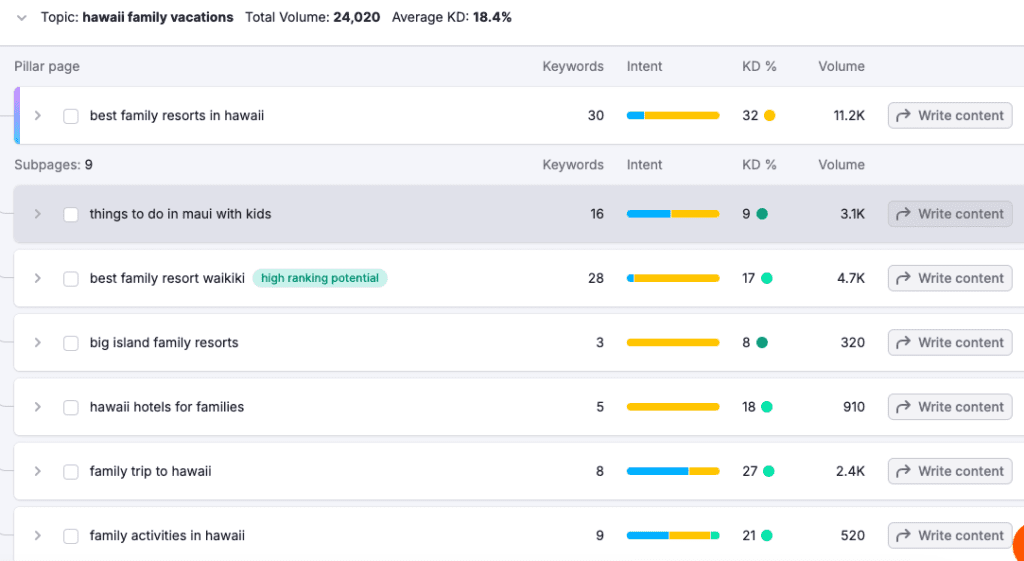
Step 9: Monitor and Adjust Your Keywords
Keyword research is not a one-time process. Search trends change, and what’s working today might not be as effective tomorrow. Make it a habit to regularly monitor your keyword performance and adjust your strategy as needed.
Here’s how to keep your keyword strategy updated:
- Track rankings: Use tools like Ahrefs, Semrush, or Moz to monitor where your content ranks for specific keywords.
- Check for new trends: Stay up to date on changes in search behavior, new competitors, or emerging technologies that may influence search trends.
- Update old content: Periodically refresh and update existing content with new keywords and up-to-date information to keep it relevant and competitive.
Step 10: Implement Keywords in Strategic Places
Once you’ve selected the right keywords, the next step is optimizing your content for them. Here’s a checklist of where to place your target keywords:
- Title tag: Your primary keyword should be included in your page’s title tag. This is one of the most important places for SEO.
- Meta description: Although meta descriptions don’t directly impact rankings, including your primary keyword can increase click-through rates.
- Headings: Include your primary keyword in at least one of your headings (preferably the H1 tag).
- URL: Your page’s URL should be concise and include your target keyword.
- Body content: Naturally weave your keywords into the content, but avoid keyword stuffing.
- Image alt text: Include your keyword in the alt text of images, as this helps with image search and accessibility.
Elevate Your SEO with Targeted Keywords
Choosing the right keywords is a vital part of any successful SEO strategy. By following these steps—defining your SEO goals, brainstorming keywords, analyzing metrics, and optimizing for user experience—you’ll be able to select keywords that not only drive traffic but also convert visitors into customers.
Remember, SEO is an ongoing process. Regularly updating your keyword strategy and adapting to new search trends will keep your website competitive in the ever-evolving digital landscape.
Work with Elevato for targeted keyword strategy services including content marketing and SEO. Schedule a free consultation today.
